Informational texts are nonfiction texts that inform, teach, or give information relative to specific topics.
Informational texts are usually in 3 parts:
-
Beginning
-
Middle
-
End
However, since informational texts can come in many different types, their general structure can be adapted to fit the format.
The beginning of an informational text is generally referred to as the introduction. It introduces the topic of the text and usually tells the reader what to expect in the following paragraphs.
The introduction's length (number of words) greatly varies depending on the type of the text but its main purpose doesn’t change. It must inform the reader of the topic of the text.
Let’s take the subject of bees. A short introduction could look like this:
Our Winged Allies
Millions of different species inhabit Earth. Some crawl, others swim, and some of them fly. Bees are among those that fly and their contribution to the planet’s ecosystem is impressive. Let’s explore the astonishing world of bees.
The body of an informational text is the most important part. It is where readers will find all the information on the current subject.
Writers will use multiple techniques within their informational text to inform, teach or explain something to readers such as:
-
Description
-
Problem & solution
-
Cause & effect
-
Sequence
-
Compare & contrast
An informational text can include more than one technique, as long as it follows the main purpose: to inform.
This technique’s objective is to create mental images for readers to get a clear picture of what is being described. Descriptions give a lot of details to readers.
|
Signal words for descriptions |
|
for example |
|
for instance |
|
in addition |
|
such as |
|
on top of |
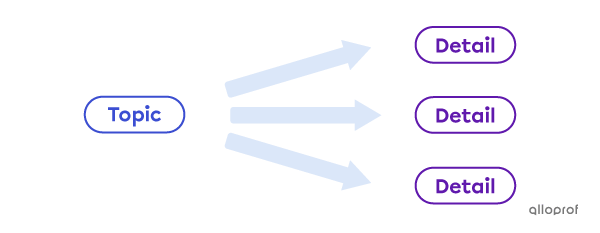
A short paragraph on the topic of bees using the description technique could look like this:
Bees are insects and like all insects, their body is made of three parts: an abdomen, a thorax and a head. In addition, they always have six legs and two pairs of wings. Bees are identifiable by their black and yellow colours.
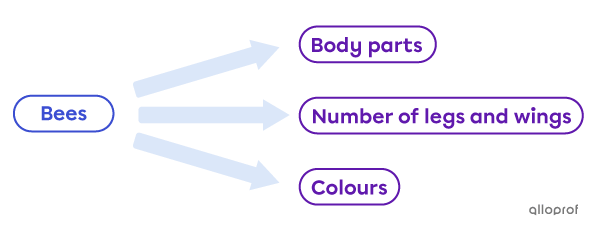
This technique shows the relationship between two things. It explains how one thing (the cause) makes something else happen (the effect).
It is often found in historical texts.
|
Signal words for cause & effect |
||
|
because |
(to) cause |
led to |
|
reason |
accordingly |
effect |
|
result |
in consequence |
impact |

A sentence using the cause and effect technique on the topic of bees could look like this:
The vast use of pesticides and the massive loss of natural habitat due to human activity led to a humongous decline of pollinators such as bees.
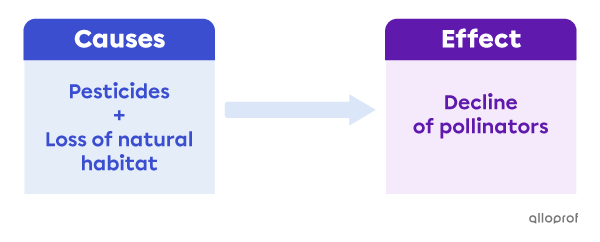
This technique orders events, actions or elements in a logical way. It is widely used for:
-
sequential instructions (like building Lego sets or a cooking recipe)
-
chronological events (historical retelling)
When using this technique, organizing the elements in the right order is essential.
|
Signal words for sequences |
||
|
after |
before |
during |
|
earlier |
finally |
first |
|
from |
how to |
in order |
|
last |
meanwhile |
next |

A short paragraph using a sequence on the topic of collecting honey from a beehive could look like this:
First, you open the beehive. It is recommended to use a smoker and puff the smoke around the hive entrance. After, you remove bees from the hive using your favoured method. Then, you uncap the wax-sealed honeycomb with an uncapping knife. Finally, you extract the honey with a honey extractor.

The compare and contrast technique is used to reveal similarities or differences between topics.
|
Signal words for compare & contrast |
||
|
alike |
also |
both |
|
comparable |
even |
just as |
|
similar |
although |
despite |
|
difference |
however |
instead |
|
unlike |
otherwise |
in common |

A short paragraph using the compare and contrast technique on the topic of bees could look like this:
There are hundreds of different types of bees. However, they share some key characteristics. Something comparable in many bee species is their low risk of stinging humans. Most of them are not typically aggressive. Most bees come in similar sizes. Carpenter bees tend to be more solitary unlike bumble bees which are more social.
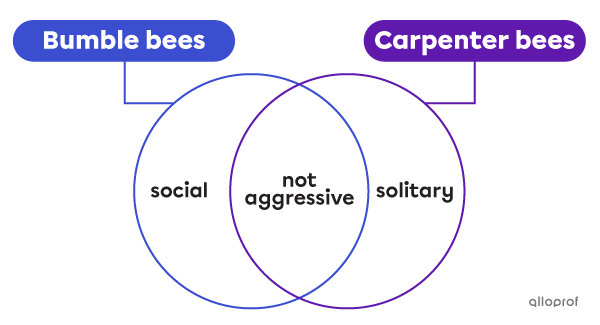
This technique requires separating the text into a minimum of two parts:
-
Identify a problem
-
Give a detailed solution to this problem
This technique can require the use of other techniques, such as the description and possibly the cause & effect.
|
Signal words for problem & solution |
||
|
dilemma |
recommend |
concern |
|
problem |
so that |
one reason is |
|
prevent |
to solve |
the answer is |
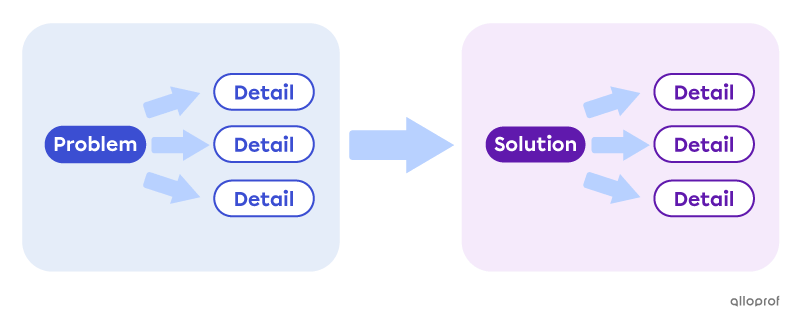
A short paragraph using the problem and solution technique on the topic of bees could look like this:
The decline in pollinators, such as bees, is a problem and a good indicator of how our global ecosystem is doing. Climate change caused by human activity is putting insects at risk of extinction. Humans have a vital role in bringing bees, butterflies and other pollinators back into our communities. Adding some native plants to your yard or balcony can have an impact on pollinator populations. Using less pesticides to grow our crops is also an option.
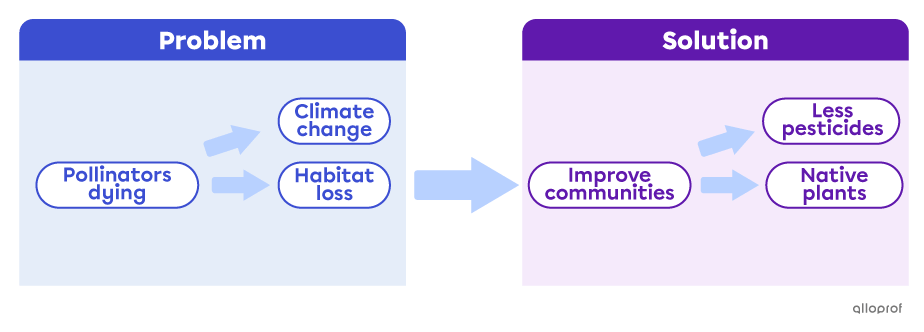
The end of an informational text is usually referred to as the conclusion. Its main purpose is to wrap up the topic that was discussed in the text.
Just like the introduction, its length (number of words) can greatly vary depending on the type of informational text.
|
Signal words for the conclusion |
||
|
finally |
to conclude |
to wrap up |
|
in conclusion |
to sum up |
in summary |
To wrap up the topic of bees, a short conclusion could look like this:
In conclusion, bees are exceptional creatures. Their job, along with other pollinators, cannot be replaced and their presence ensures the crucial biodiversity needed for a healthy ecosystem.
Informational texts can include many text features to help with organization.
|
Features |
Tells the reader |
Where can it be located? |
|
Title page |
topic, publishing, and copyright information |
The title page is the first page of an informational document. |
|
Table of contents |
how the document will be organized |
The table of contents is usually located right after the title page. |
|
Index |
where to find details about specific information in the text |
The index is at the end of the informational text. |
|
Appendix |
about additional information not covered in detail in the text |
The appendix is at the end of the informational text. |
|
Title and subtitles |
what the text is about |
The title/heading is located at the top of the text or on the cover page. |
|
Numerical/Bulleted lists |
quick details on a selected topic |
Numerical or bulleted lists are usually found in the body of the text. |
|
Diagrams/Graphs |
detailed or simplified version of the information, usually with a visualization |
Diagrams and graphs are usually found in the body of the text. |
|
Charts/Tables |
organized information to facilitate comparisons or contrasts |
Charts and tables are usually found in the body of the text. |
|
Photos/Drawings |
an exact representation of what the information looks like |
Photos and drawings are usually found in the body of the text. |
Here are some different types informational texts can come in:
|
Formats |
Main features |
|
Newspaper article |
|
|
Documentary |
|
|
Nutrition label |
|
|
Science article |
|
|
Website |
|
|
Recipe |
|
|
Biography |
|
|
Instruction manual |
|
|
Textbook |
|